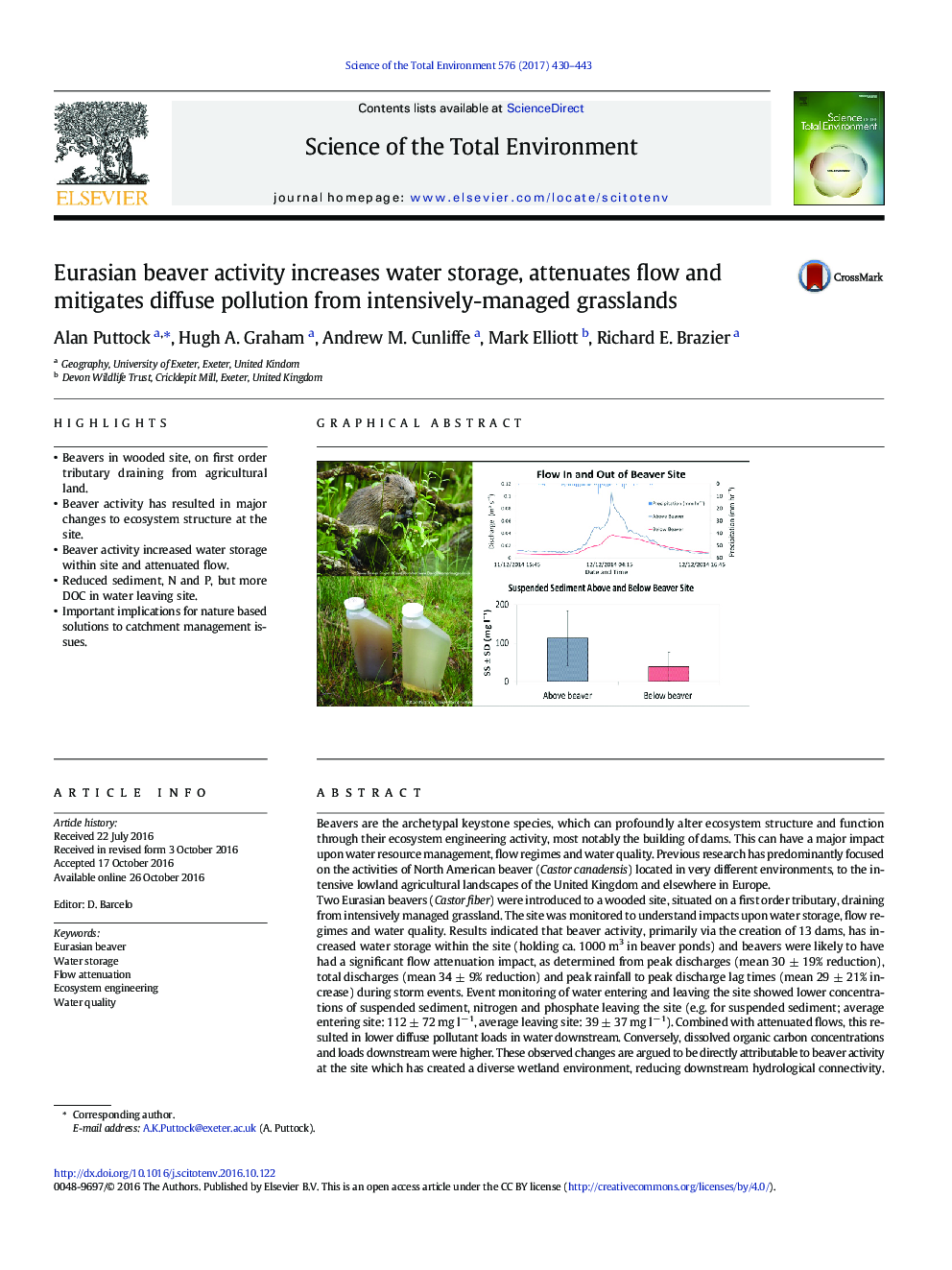| کد مقاله | کد نشریه | سال انتشار | مقاله انگلیسی | نسخه تمام متن |
|---|---|---|---|---|
| 5751986 | 1619715 | 2017 | 14 صفحه PDF | دانلود رایگان |
- Beavers in wooded site, on first order tributary draining from agricultural land.
- Beaver activity has resulted in major changes to ecosystem structure at the site.
- Beaver activity increased water storage within site and attenuated flow.
- Reduced sediment, N and P, but more DOC in water leaving site.
- Important implications for nature based solutions to catchment management issues.
Beavers are the archetypal keystone species, which can profoundly alter ecosystem structure and function through their ecosystem engineering activity, most notably the building of dams. This can have a major impact upon water resource management, flow regimes and water quality. Previous research has predominantly focused on the activities of North American beaver (Castor canadensis) located in very different environments, to the intensive lowland agricultural landscapes of the United Kingdom and elsewhere in Europe.Two Eurasian beavers (Castor fiber) were introduced to a wooded site, situated on a first order tributary, draining from intensively managed grassland. The site was monitored to understand impacts upon water storage, flow regimes and water quality. Results indicated that beaver activity, primarily via the creation of 13 dams, has increased water storage within the site (holding ca. 1000 m3 in beaver ponds) and beavers were likely to have had a significant flow attenuation impact, as determined from peak discharges (mean 30 ± 19% reduction), total discharges (mean 34 ± 9% reduction) and peak rainfall to peak discharge lag times (mean 29 ± 21% increase) during storm events. Event monitoring of water entering and leaving the site showed lower concentrations of suspended sediment, nitrogen and phosphate leaving the site (e.g. for suspended sediment; average entering site: 112 ± 72 mg lâ 1, average leaving site: 39 ± 37 mg lâ 1). Combined with attenuated flows, this resulted in lower diffuse pollutant loads in water downstream. Conversely, dissolved organic carbon concentrations and loads downstream were higher. These observed changes are argued to be directly attributable to beaver activity at the site which has created a diverse wetland environment, reducing downstream hydrological connectivity. Results have important implications for beaver reintroduction programs which may provide nature based solutions to the catchment-scale water resource management issues that are faced in agricultural landscapes.
450
Journal: Science of The Total Environment - Volume 576, 15 January 2017, Pages 430-443
